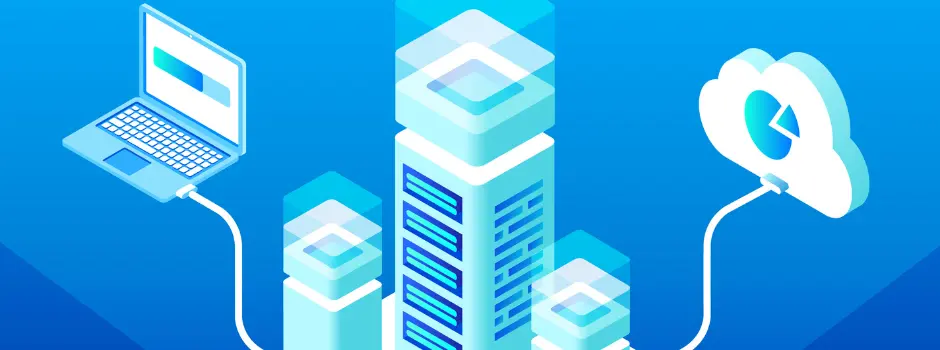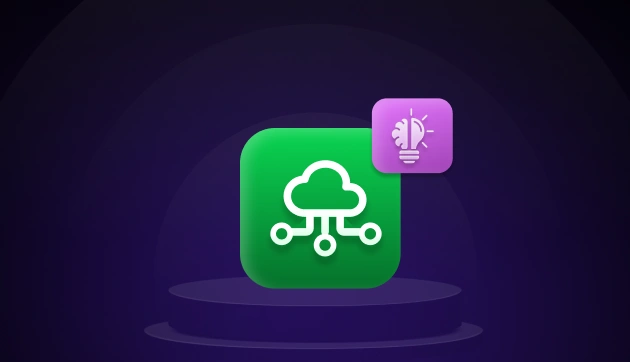
Internet Protocol and Transmission Control Protocol
Mar 06, 2025 3 Min Read 2197 Views
(Last Updated)
Internet Protocol (IP) and Transmission Control Protocol (TCP) are essential for data transmission across the internet. IP is responsible for addressing and routing data packets to their intended destinations, while TCP ensures reliable and orderly delivery, managing connections and checking for errors.
This blog will provide a concise overview of how these two protocols work together to facilitate seamless online experiences. From packet delivery to data integrity, we’ll explore their vital roles in everyday internet use and their ongoing evolution in the fast-paced world of technology.
Table of contents
- Internet Protocol and Transmission Control Protocol
- Connection Establishment (Three-Way Handshake)
- Data Transfer
- Example
- Conclusion
Internet Protocol and Transmission Control Protocol
Delivering information packets from a source device to a destination device is the primary purpose of the Internet Protocol (IP), which serves as the address system for the network. IP is the main protocol used to create network connections and forms the backbone of the Internet. Error checking and packet ordering are not handled by IP. Another protocol is needed for this capability, usually the Transmission Control Protocol (TCP).
Being a connectionless protocol, IP routes and addresses each piece of data separately from the source device to the target device, with no acknowledgement sent back to the source. That’s the role of protocols like TCP. TCP and IP work together to preserve packet order and to keep a connection open between the sender and the recipient.
Know More: How Do Servers Handle Requests? A Comprehensive Guide
Connection Establishment (Three-Way Handshake)
To create a dependable connection between a client and a server, TCP uses a procedure known as the “three-way handshake“.
- Synchronize (SYN): The client requests to establish a connection to the server via a SYN message. A sequence number generated randomly and included in the SYN packet is used to track the data the client sends. For example, the client transmits “SYN, Seq = X,” where a random sequence number is denoted by {X}.
- Synchronize-Acknowledge (Syn-ACK): Once the SYN packet reaches the server, it sends back a SYN-ACK message. There are two components to this message:
- The server indicates that it has received the SYN by delivering an acknowledgement number ({Ack = X + 1}) in response to the client’s sequence number ({Seq = X}).
- Additionally, the server creates a unique random sequence number on its end to start recording data. Example: The server transmits “SYN, Seq = Y; ACK = X + 1”; the client’s SYN is acknowledged by `Ack = X + 1}, and `Y} is the server’s random sequence number.
3. Acknowledgement (ACK): The client sends an ACK packet in response to the server’s SYN-ACK. This packet shows that the connection has been successfully established and verifies that the client has received the server’s sequence number ({Seq = Y}). – Client sends “ACK, Seq = X + 1, Ack = Y + 1” as an example.
Also Read: Understanding the Open Systems Interconnection (OSI) Model: A Complete Guide
Data Transfer
After the connection is made, the reliable delivery mechanism of TCP can be used by the client and server to exchange data.
Segmentation of Data: TCP splits up big data files into smaller units called segments. Sequence numbers are used to number each segment, enabling the receiver to put the data back together in the right order even if packets come out of order.
Reliable Transmission:
- Acknowledgements: The recipient acknowledges the sender each time a segment is received. When a sender delivers segments with sequence numbers {X} to {X+1000}, for instance, the recipient will respond with an acknowledgement ({Ack = X + 1001}) that contains the next byte it anticipates receiving.
- Retransmission: The receiver does not transmit an acknowledgement for that sequence number if a segment is dropped during transmission. The sender retransmits the missing segment after waiting a certain amount of time (referred to as a timeout) if it does not receive an acknowledgement. Alternatively, the receiver can send a duplicate acknowledgement for the last successfully received segment, prompting the sender to retransmit.
- Flow Control (Windowing): To avoid sending too much data to the recipient at once, TCP employs a feature known as flow control. The sliding window technique is used for this, informing the sender of the maximum amount of data that can be transferred before having to wait for an acknowledgement. The size of the window dynamically changes according to the receiver’s capability.
- Congestion Control: TCP progressively increases the data transmission rate using methods such as Slow Start and Congestion Avoidance to prevent overcrowding on the network. TCP lowers the transmission rate to lessen the strain on the network if packet loss occurs, which is an indication of congestion.
Example
Assume you are using a delivery service to mail someone a book. Rather than shipping the entire book at once, each chapter is cut out, mailed in a distinct envelope, and delivered by a different route. It’s possible that some envelopes could come later than others and that their sequence will be disorganized. The delivery service makes certain that every envelope gets to its intended location. This is comparable to how IP makes sure every data packet gets to where it’s going.
Once all the envelopes (chapters) arrive, a person on the other end (TCP) reassembles the chapters in the correct order, requests any missing chapters that didn’t arrive, and finally notifies you that the entire book has been received. To guarantee a dependable and comprehensive process, TCP keeps in contact before sending of the first envelope and continues until the last one is received.
You must definitely master advanced networking concepts Course to get an in-depth understanding of the TCP/IP protocols.
Conclusion
In summary, the Internet Protocol and Transmission Control Protocol are vital for enabling reliable communication over the internet. By managing data addressing, routing, and error-checking, they ensure smooth online experiences. As technology evolves, these protocols continue to adapt, highlighting their essential role in our interconnected world. Understanding them deepens our appreciation for the infrastructure that supports our digital lives.




























Did you enjoy this article?